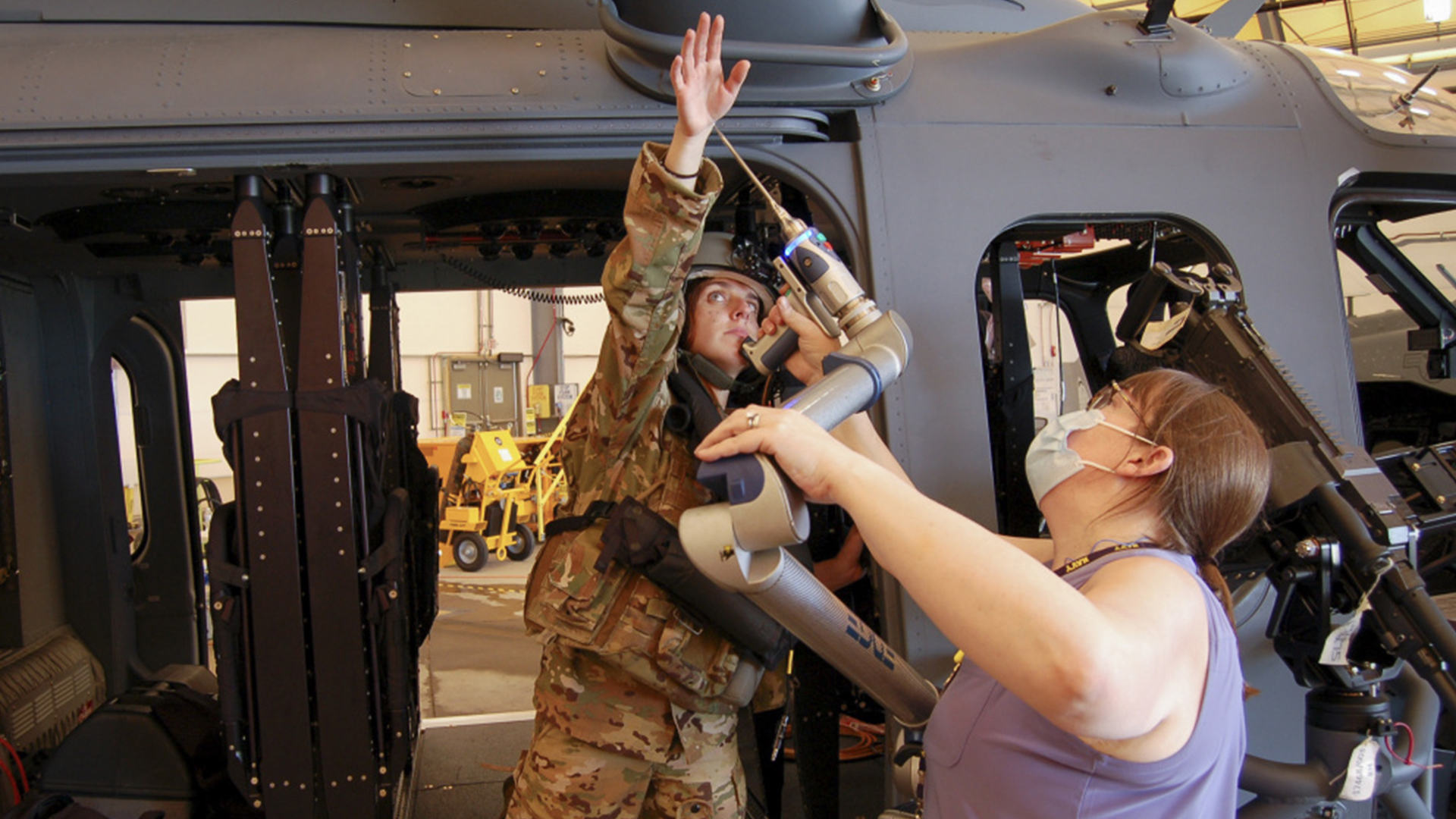

A branch whose motto is “Aim High” might set its height requirements a little lower for airmen who want to be career enlisted aviators, which is the umbrella term for 10 enlisted flying jobs such as loadmaster, flight engineer, inflight refueling specialist, or even sensor operator for a remotely piloted aircraft.
The current height standard for career enlisted aviators (CEAs) is between 5 feet 4 inches and 6 feet 5 inches. However, that standard dates back to 1967 and is based on male pilots sitting at control stations, not CEAs moving around the aircraft throughout the flight.
“CEAs are different than pilots,” Chief Master Sgt. Christopher Dawson, the Air National Guard CEA career field manager explained in a press release. “Many CEAs move throughout the aircraft while working. So, this policy does not reflect the actual requirements and does not create an accurate safety standard.”
The press release comes nearly nine months after the Air Force removed initial height requirements for officers trying to become aviators. Like with the pilot standards, the CEA standards seem to be turning away a large number of CEA candidates at a time when the Air Force is hurting for more of them.
“[Q]ualified volunteers have become a highly limited resource” in CEA fields, Maj. Gen. Robert LaBrutta wrote in a 2019 memo, back when he was the director of Air Force military force management policy. At the time, manning in CEA jobs was nose-diving to 65 percent, and the situation hasn’t improved with time.
“Over the years, this policy has eliminated a large portion of talent and has contributed to a CEA readiness problem,” Dawson said.

Women are most affected by the outdated standards. Dawson’s predecessor, Chief Master Sgt. Kurt Uchimura, noticed that most of the people who were turned down for CEA jobs were women. To find out why, Uchimura reached out to the Air National Guard’s Diversity and Inclusion Office, which found that 43.5% of American women, particularly women from minority groups, fell below the minimum height standard of 5 feet 4 inches.
Turning away qualified women because of an outdated, ill-fitting safety standard is a waste of good talent, so shortly after Dawson became the CEA career field manager for the Air National Guard in 2019, he became a member of the Women’s Initiative Team, an all-volunteer women’s advocacy group for the Air Force.
After several months of hard work, Dawson’s team, and the Assistant Secretary of the Air Force for Acquisitions got a $4 million grant in July 2020 to start a study, with the goal up updating the standards for each CEA specialty.
You may ask why the Air Force needs $4 million to change a simple height requirement, and the answer, according to the press release, is that doing it right takes time, and a comprehensive study ain’t cheap.
“Safety standards are essential and we must know what standards are required to safely accomplish CEA duties,” said Dawson, who added that a solid-gold study “will cement a path to readiness.”

The first aircraft to be studied was the MH-139A Grey Wolf helicopter, which is set to replace the Air Force’s UH-1N Huey for patrolling vast missile bases in states like Wyoming and Montana. That study was completed in August, and the Air Force plans to study an aircraft a month until the whole CEA-crewed fleet (such as the C-130, C-17, HH-60G Pave Hawk and many others) have been reviewed by fall 2022.
Along the way, the study will also review body measurements for pilots, “so both officers and enlisted will benefit,” Dawson explained.
The airman said that this project is the most meaningful of his whole career.
“As a father of two young ladies, with a successful working spouse, a fiercely independent grandmother, and several influential female figures throughout my career, this project takes on a special meaning,” he said. “To my team and the WIT, this couldn’t have been done without you.”
Featured Image: Air Force Capt. Megan E. Burk, of the 413th Test Squadron, performs tasks during an anthropometric accommodation evaluation on the MH-139A Grey Wolf at Eglin Air Force Base, Florida, in August 2020. This study is part of a multi-agency effort to create the first anthropometric entry standards for U.S. Air Force career enlisted aviators. (Courtesy Photo)
Related: C-130 aircrew receives Combat Action Medal for dodging RPG over Afghanistan
